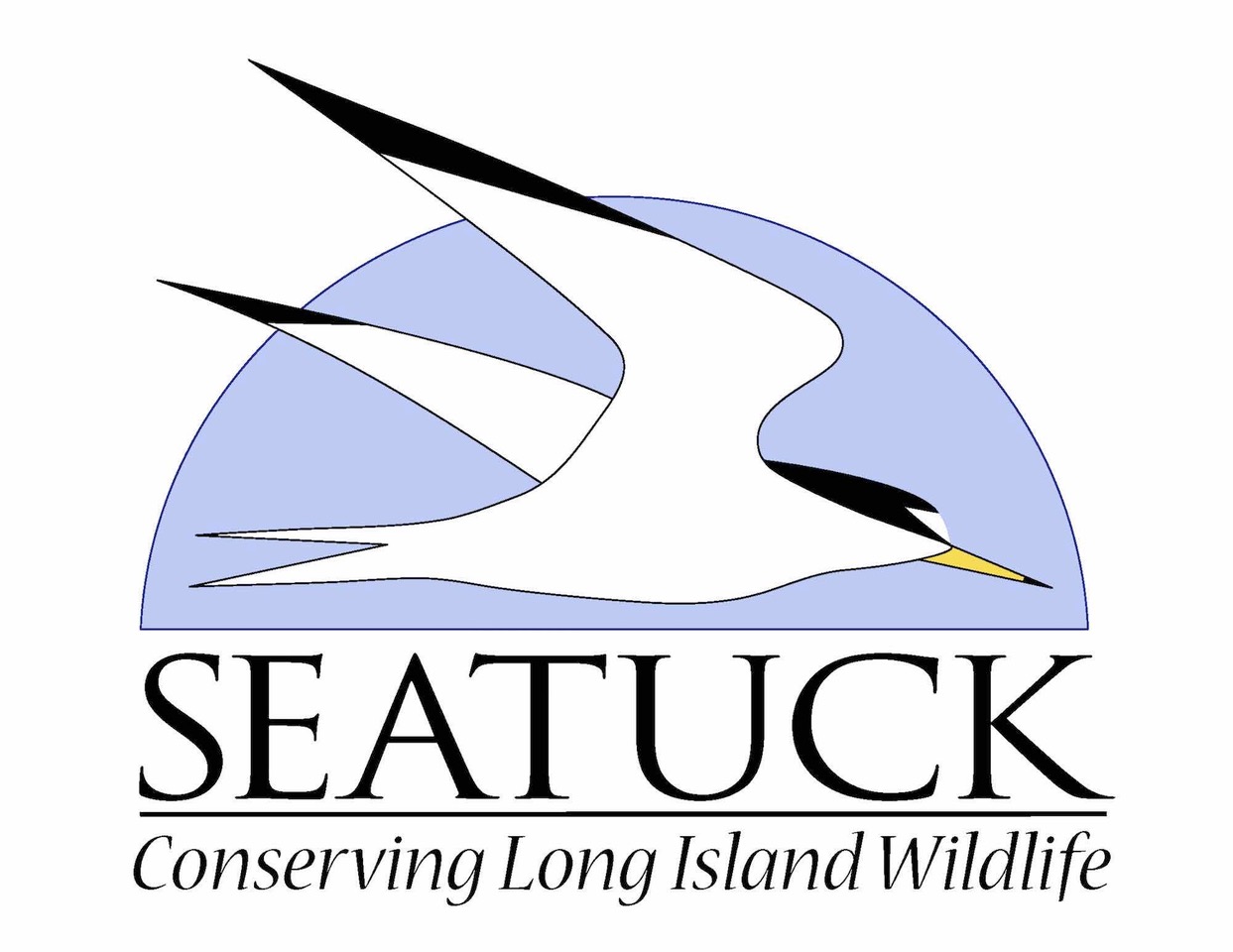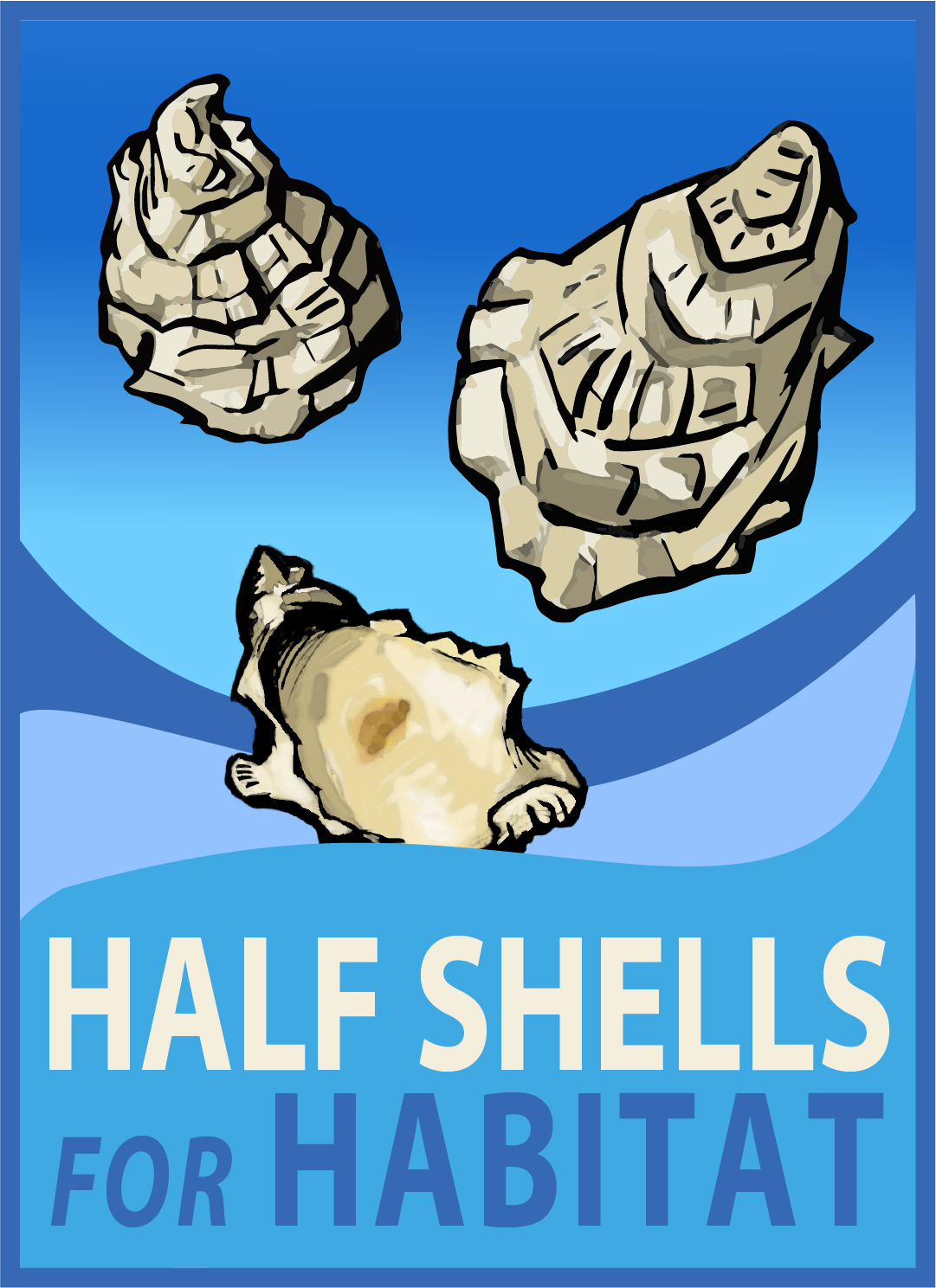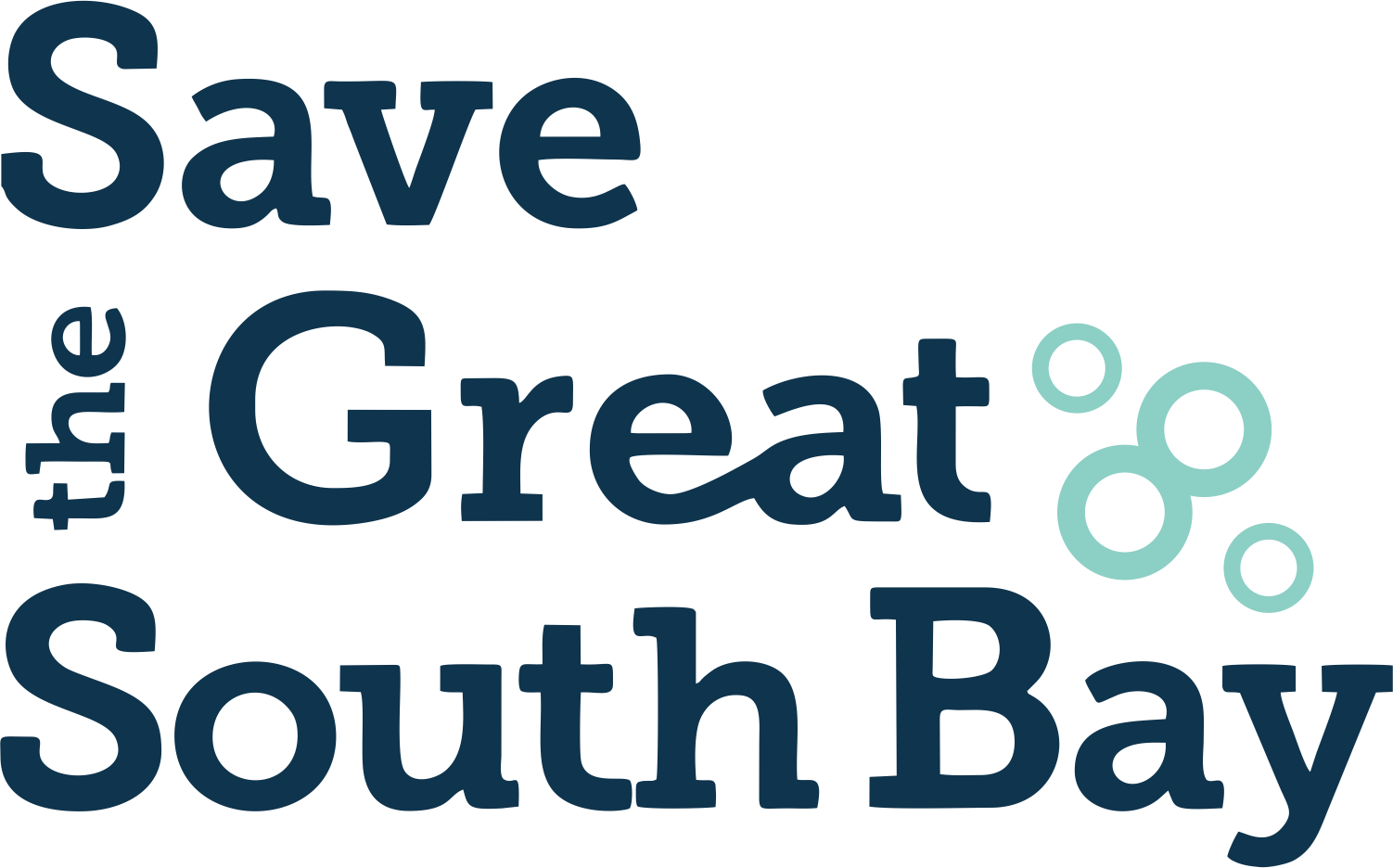Show Your Sea-port!
HALF SHELLS FOR HABITAT
Half Shells for Habitat is an island-wide partnership that collects waste oyster shells from restaurants for the purpose of returning them to Long Island's estuarine waters through oyster restoration and other habitat improvement projects. The program seeks to further the restoration of native Eastern Oyster (Crassostrea virginica) populations and improve coastal water quality. Initiated and administered by Seatuck, the partnership includes the towns of Brookhaven, Islip, Huntington, Hempstead, North Hempstead, and East Hampton, including environmental groups such as the Village of Ocean Beach Environmental Council (VOBEC), Huntington Oyster Reef Project (HUNORP), Peconic Baykeeper, as well as Adelphi (CORE) and Stony Brook (SHIRP) University projects and a growing roster of restaurants and a dedicated team of volunteers.
BACKGROUND
Long Island was historically one of the country’s most important oyster producing regions, with its oysters
considered some of the best in the world. However, by the 1920s water pollution and over-harvesting had
decimated the industry. Eforts to restore wild oysters were initiated, but a series of storms in the 1930s buried
the nascent populations and thwarted any possible recovery. More recently, aquaculture has initiated a
rebirth of Long Island’s oyster industry.
Oysters shells are an important natural marine resource and play a vital role in maintaining healthy marine ecosystems. Most signifcantly, they provide critical substrate upon which juvenile oysters attach and grow. After generations, this process builds oyster reefs, which provide valuable wildlife habitat and enhance coastal resiliency. Oyster shells are also important for water quality: as they dissolve they release calcium carbonate, which helps to buffer the pH of estuarine waters and combat rising coastal acidifcation. For these reasons, oyster shells are an important component of shellfsh and habitat restoration eforts; they are used for everything from spat-on-shell projects to living shorelines. Unfortunately, the shells of most oysters consumed on Long Island are thrown away and end up in landflls or incinerators. Few ever get back to the water to play their important role in the ecosystem or are available for restoration projects.
HOW IT WORKS
The Half Shells for Habitat shell recovery process starts with restaurant kitchen staf that collect shells in
dedicated buckets. The buckets are then picked up by volunteers or municipal employees and delivered to
storage sites where the shells have to cure for at least six months. Once cured, the shells are available for use
in restoration projects or could be returned directly to local embayments to support the recovery of wild set
oysters.
10 Benefits of Shell Recovery & Oyster Restoration
- Enhanced Water Quality and Clarity – Oysters consume microscopic algae called phytoplankton, which helps to clarify seawater and promote eelgrass growth. In addition, the removal of harmful phytoplankton decreases the likelihood of harmful algal blooms, such as Brown and Rust Tides.
- Habitat for Wild Oyster Restoration – In many bays, wild oysters can’t take hold because of the lack of the hard substrate they require for attachment. This substrate, which was historically provided by other oyster shells, is restored when recovered shells are returned to the water. They provide the necessary substrate for “wild set” oysters, which are important for natural disease resistance and genetic diversity in overall oyster populations.
- Regulating Nitrogen Pollution – Oysters grow well in nitrogen-rich waters. They remove nitrogen from seawater by consuming phytoplankton that have the ability to incorporate nitrate. At harvest time, farmed oysters and the nitrogen they’ve consumed are removed from the environment. The consumption of wild oysters by transient wildlife also serves to rid the local environment of excess nitrogen.
- Reduce Landfll/Incineration – Recycling oyster shells reduces the cost of delivering and disposing of them as waste in landflls or burning them in incinerators.
- Shoreline Stabilization – Oyster shells can be used to stabilize eroding shorelines in salt marshes, or as part of a reef building process with the reintroduction of live oysters. Oyster reefs mitigate the damaging wave efects of severe storms and hurricanes. As sea level rises at an ever-accelerating rate, these eforts will help protect our shorelines.
- Mitigate Coastal Acidifcation – Excessive algae growth in Long Island’s coastal waters fuels high levels of the bacteria that decompose the algae. The bacteria use oxygen and produce CO2 as they respire. This increased CO2 lowers the pH of the water (already low from atmospheric absorption of CO2 in ocean waters), causing what is known as “coastal acidifcation.” This condition, which is increasing around Long Island, presents a signifcant threat to our estuaries and wildlife (including young oysters, which are especially sensitive to pH changes). The calcium carbonate of recycled oyster shells provides a bufer against coastal acidifcation, acting like an antacid as they dissolve.
- Provide Mesohabitat – Wild oyster reefs provide important habitat for small fsh, shrimp and juvenile crustaceans. While aquaculture structures can mimic this habitat, it is removed at harvest time and lost. Wild oyster reefs are necessary to provide permanent, long-term mesohabitat for marine wildlife.
- Carbon Sink – Shells are made of calcium carbonate; when burned as kitchen waste they emit carbon into the atmosphere. However, when bound together in an oyster reef, the same shells instead serve as a carbon sink.
- Community Involvement and Education – Shell recovery and restoration relies on volunteers to collect shells from participating restaurants, assist with spat-on-shell rearing and a wide range of other jobs. In the process, it educates volunteers and empowers them as ambassadors to engage the general public in the work to protect and restore our coastal ecosystem.
- Quality of Life & Tourism – Oysters not only enhance the health of our coastal waters, but they are also a prized culinary delicacy for which Long Island is renown. These important roles are both critical in supporting the quality of life and tourism that is so vital to Long Island’s economic health.


